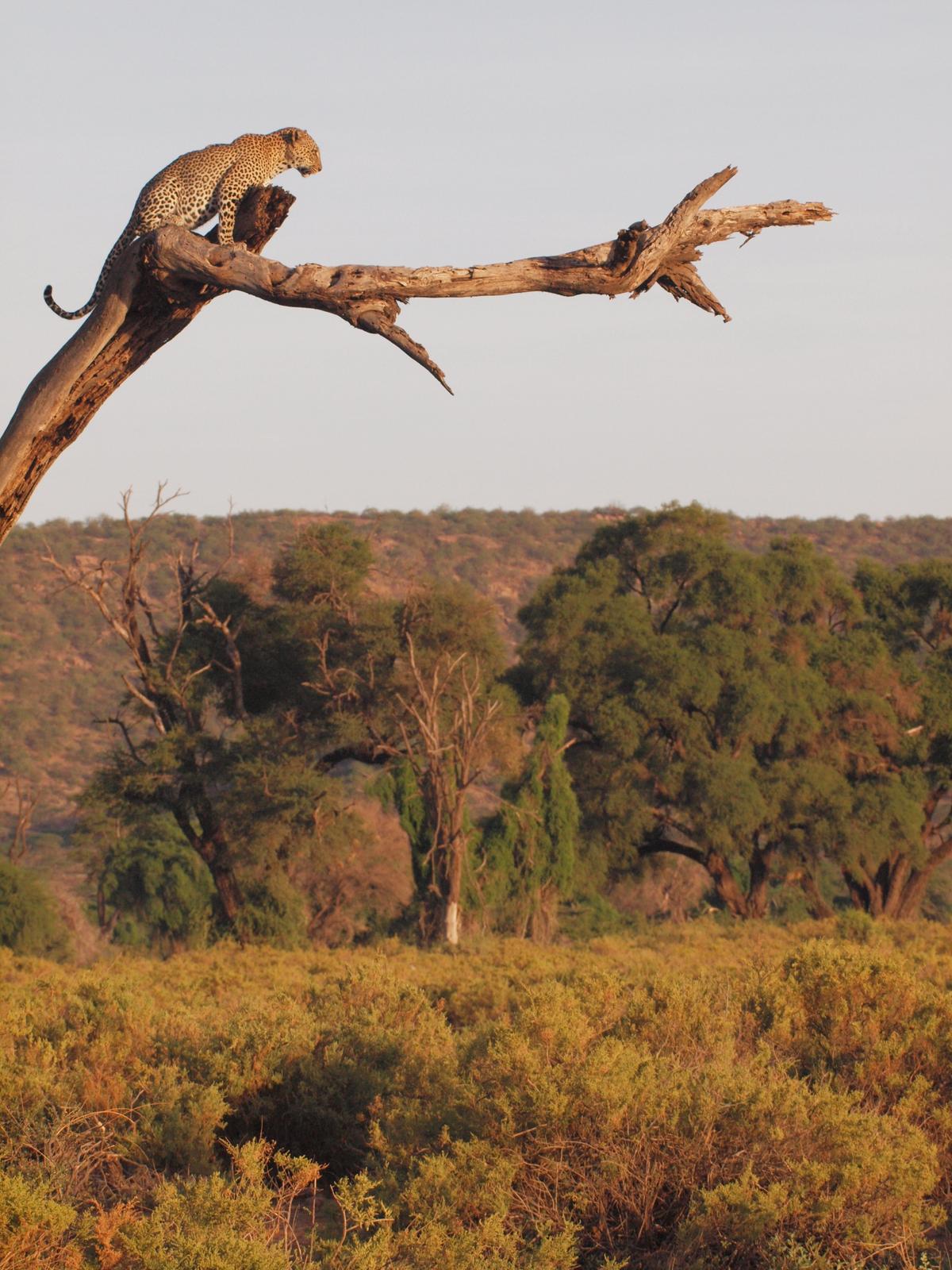My wife Tip and I stood with three other passengers in an open-rooftop Toyota van gasping at a herd of elephants close enough to hear their deep rumbling and chewing noises. While we’d lost count in the first hour of the trip, the abundance of them and their awkwardly adorable calves throughout the week hadn’t made watching them any less awesome.

A leopard gets a bird's eye view of his hunting grounds in Samburu National Park. Kevin Revolinski





